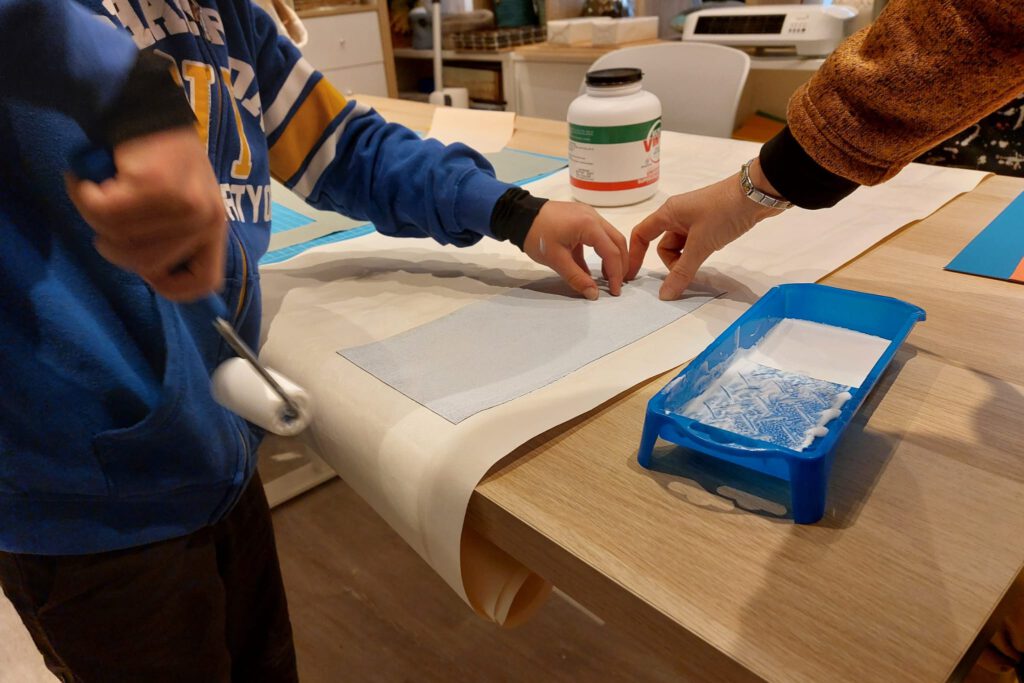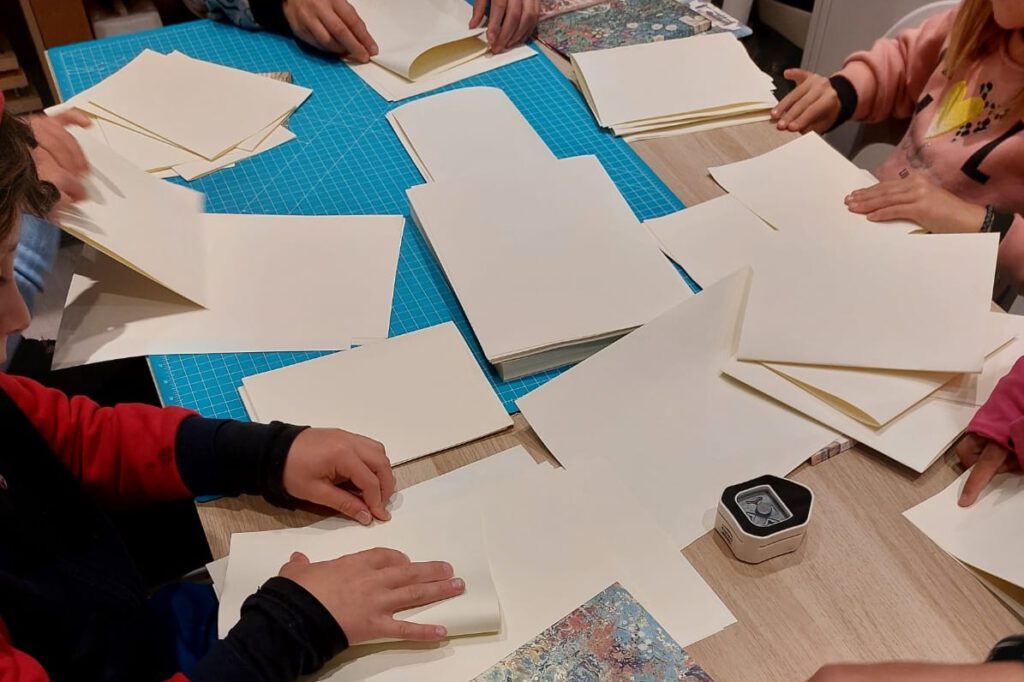Discovering the different book elements (ITALY) 21-03-2025
This session delved into the anatomy of a book, laying the groundwork for our next project: personal notebooks. We meticulously cut, folded, and punched the signatures, and crafted elegant eco-leather covers lined with soft velvet, which were then set aside to let the glue dry. The anticipation for next week’s binding process, where we’ll unite cover and signatures, was palpable. To round out our creative endeavors, we each contributed individual illustrations to our collaborative fairytale book, adding vibrant layers to our shared narrative.
Discovering the different book elements (ITALY) 21-03-2025 Read More »









